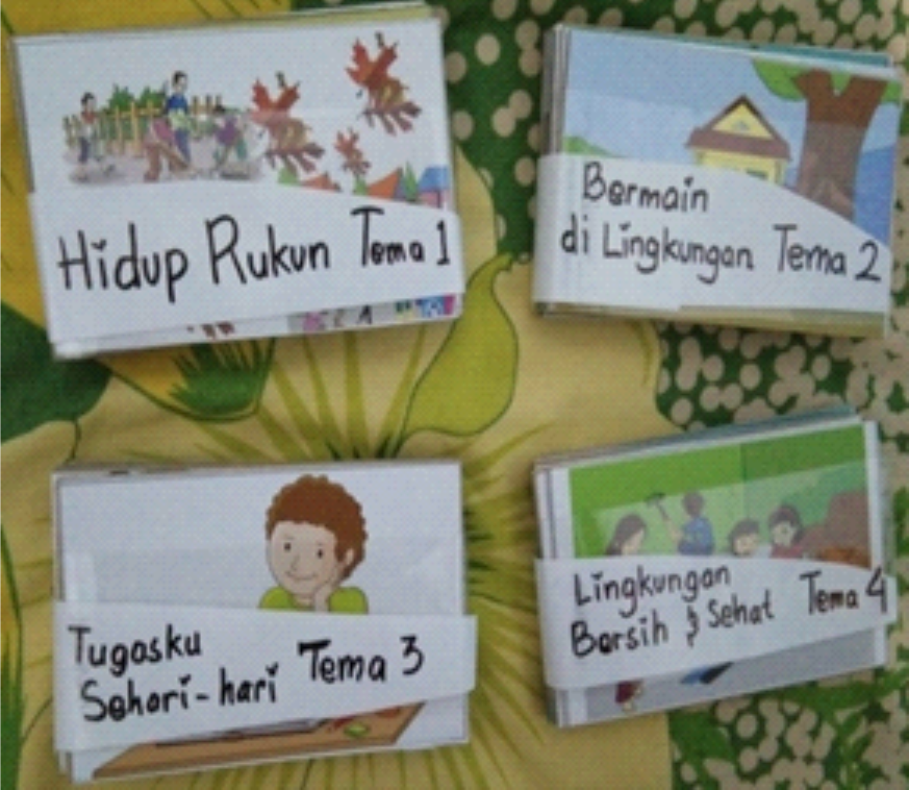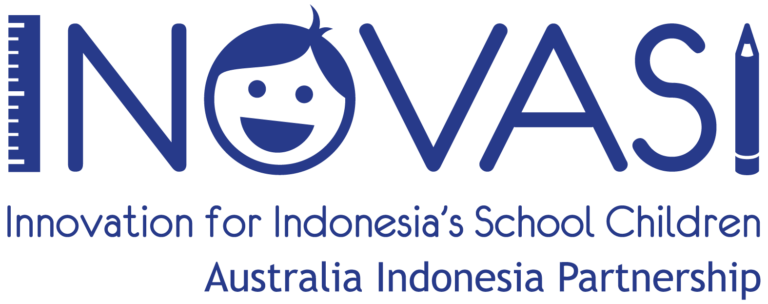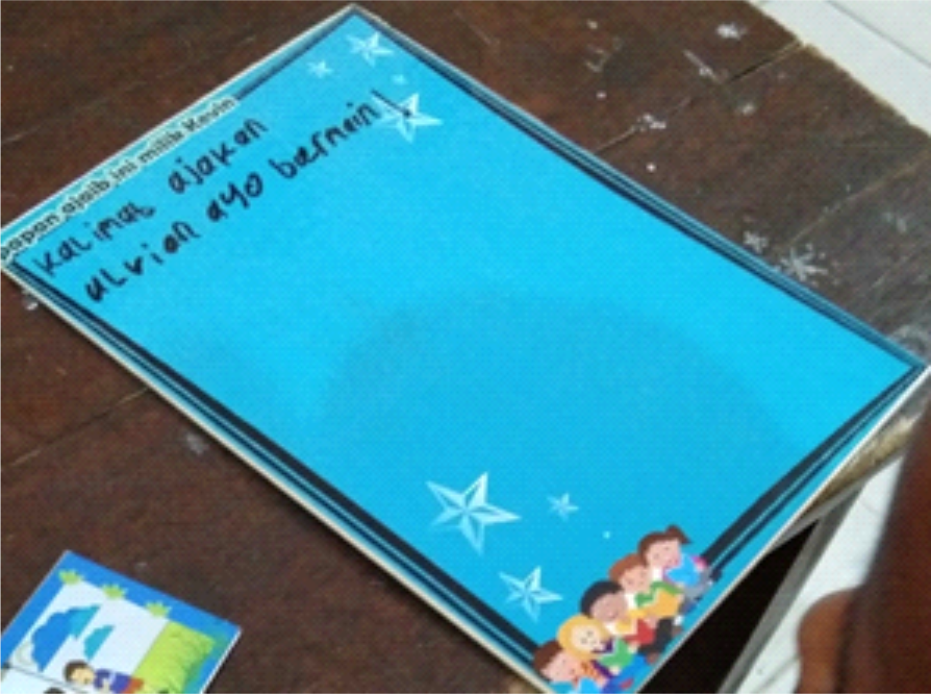
I am currently entrusted to teach the early grades. My super excited class is grade 2B, which has a total of 33 students (19 boys and 14 girls). Most of the early grade students still lack communication skills. If a teacher asks a verbal question, only a few students are brave enough to answer, and even then, they answer timidly for fear of being wrong. The other students tend to be silent, and if a teacher points to them, they shake their heads and say they do not know the answer.
The same thing was happening to me when I invited the students to open their thematic books; the students often looked unenthusiastic to open their books to the assigned page. It felt like there was an additional burden to opening the books. Based on what I had seen and felt on the students’ abilities and mannerisms, I began to ask myself how I could provide meaningful lessons so that they would be enthusiastic and not bored. In addition to this, I determined that I would like the students to be brave and willing to actively answer any questions and complete the assignments given, especially when I am delivering the subject material on how to recognize and understand an imperative in Theme One.
The subject material of recognizing and understanding an imperative is actually easy; it’s not difficult to say “Come on.” But for children, it is very difficult to say, to verbally express, or even to write this statement, especially when using an exclamation point (!). Some of the frequently asked questions are:
“Ma’am, what is an imperative?”
“Ma’am, why do we have to use an exclamation point?”
These questions can be challenging, especially if we’re not prepared to give a clear answer to our students.
It is necessary to use an exclamation point in an imperative because it emphasizes the tone of the conveyance. I began to ask myself how I could help students communicate an imperative properly, given their lack of understanding the concept
I then came up with the idea of creating Cargamte (Card Gambar Tema, or Theme Picture Cards) as a way to help students better understand what an imperative is and to help them recognize exclamation point. Based on the needs of these students, I made several picture cards that are adjusted to Themes for Grade 2. These themes are Theme One: Living in Harmony, Theme Two: Playing in My Neighborhood, Theme Three: My Daily Tasks, and Theme Four: My Healthy and Clean Environment.
The size of each Cargamte is 12 cm by 8 cm. What makes Cargamte interesting is that the surface of each card can be used as a learning medium. On the front side, there is a picture. On the back side, there is a simple story that matches the picture on the front. The simple story on each Cargamte is meant to make learning easier for both regular students and students with special needs. Another medium that I use to support the Cargamte material is the use of “Magic Boards” (Papan Ajaib). Each student has an A4-sized Magic Board that can be used to write down his or her observations. The Cargamte material for Theme One consists of several cards:
- Playing on a swing together
- Eating with family
- Reading with mother
- Doing community service
- Visiting a sick friend
- Playing with older siblings
- Working in a group
- Playing a traditional game called Krupukan
- Cooking with mother
- Meeting friends on the street
- Sharing a meal
- Greeting friends
Here is an example of the learning process: I divided the students into eight large groups consisting of four to five students. I randomly distributed two Cargamtes to each group; the students looked at the pictures and asked questions about the pictures in their individual groups. I gave all groups the opportunity to take turns sharing what they observed in the pictures. After that, the group representatives took turns exchanging their picture cards with the other groups. Once again, they talked about the pictures on the new cards. I then directed the children to turn each Cargamte over so that all students could read the simple story on the back.
After the questions and answers session and the activity of reading the simple story on each Cargamte, I invited the students to take a look at the thematic textbook, which contains simple conversations that present imperative sentences. All the students read these simple conversations, and based on the Cargamte that the students had, I assigned them to create an imperative according to the picture and story of each Cargamte in each group.
I asked my students to write down their imperative sentences on their Magic Boards. The students like writing on their the Magic Boards, especially the special needs students (anak berkebutuhan khusus, or ABK). For this reason, they are more enthusiastic to learn how to write words with the help of their friends and guidance from the teacher.
Using this medium has helped me to analyze the students’ general abilities more quickly. In the study group, simple conversations take place while the students work together and exchange Cargamtes, both in pairs and as a group.
Using Cargamtes and Magic Boards in the learning process makes it easier for the students to understand how to form imperative sentences, and they are more enthusiastic to write out their imperative sentences. A Cargamte can also be used to introduce punctuation marks to the students. In this case, each student is asked to read the story on the card according to the punctuation marks and the reading intonation written on the card. This method is quite effective, as the students directly learn punctuation marks while reading the sentences aloud according to the punctuation marks.







